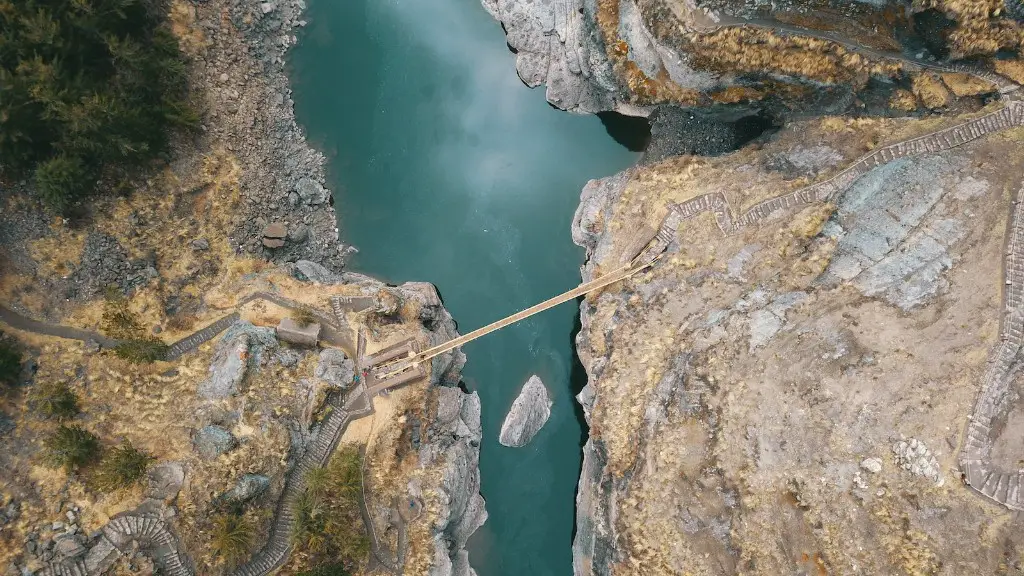When Will the Nile River Dry Up?
The longest river in the world, the Nile River, has been providing food and water for the people of Egypt and surrounding countries for thousands of years. Its waters are responsible for farming, transportation, and many other activities. While the river has been a consistent provider for centuries, the question of when it will dry up remains to be seen.
The Nile River has been on a downward spiral in terms of volume over the past few years, and experts are concerned that it could dry up if measures are not taken soon. Climate change is one of the major causes of this problem, with rising temperatures causing increased evaporation, leading to less water availability in the river.
According to hydrologists, if water usage continues at its current rate, the river may dry up by the end of the century. This would be devastating not only to Egypt, but also to the entire region, as many rely on the river for their livelihoods. Additionally, it would threaten water security and cause major environmental damage.
In order to prevent the river from drying up, measures must be taken to reduce water usage and to conserve the available resources. The Egyptian government has started initiatives to reduce agricultural water consumption, such as increasing irrigation efficiency. In addition, international organizations have implemented projects to reduce water pollution, which has been a contributing factor to the river’s decline.
Despite these efforts, the situation still remains precarious. Experts from the World Bank and other organizations have warned that time is running out in terms of taking action, and that the river’s future hangs in the balance. If immediate action is not taken, it could spell disaster for the region.
In addition to reducing water consumption, experts have also suggested other possible solutions, such as building dams to regulate the river’s flow and to increase its capacity. This, however, is more controversial, as it could have an adverse impact on the river’s ecosystem. Another option is the building of desalination plants, which would create a new source of water for the region.
Environmental Impact
The potential drying of the Nile River would have a devastating environmental impact as well. For example, without its waters, the river’s aquatic species would be left without food or shelter, and the associated fisheries would collapse. In addition, large areas of agricultural land would become unusable, leading to increased food insecurity.
The impact would not be limited to the region, however. Experts believe that the lack of water from the Nile would have a global effect, as the Nile is responsible for providing food and resources to much of the African continent. The consequences of this could be catastrophic.
The drying of the Nile River also has implications for climate change. The lack of water in the river would lead to an increase in dust and wind erosion, which could further accelerate climate change. Additionally, the disruption of the river’s flow could decrease the efficiency of hydroelectric projects, such as the recently built Grand Ethiopian Renaissance Dam.
To make matters worse, if the river were to dry up, many of its inhabitants would be forced to move, leavingbehind the communities they have built over centuries near the river. This would lead to displacement, poverty, and other forms of hardship.
In conclusion, the drying of the Nile River would have an immense impact on the region and the world. While it is still too early to know when it may happen, it is certain that immediateaction must be taken in order to prevent it from coming true.
Political Challenges
In addition to environmental factors, political tensions within the region could also cause the Nile River to dry up. For example, several countries, including Ethiopia, Uganda, and Kenya have begun constructing dams on the Nile tributaries. These dams could significantly reduce the water supply of the Nile, and they have been opposed by Egypt and Sudan, which rely heavily on its waters.
The construction of these dams, as well as other international projects, has been made difficult by the complex geopolitical situation in the region. Conflicting interests between countries, as well as a lack of trust, have made it difficult for them to coordinate their efforts and to come to an agreement on how best to manage the river’s resources.
This situation has been exacerbated by the fact that some countries have tried to take unilateral action that benefits only themselves. For instance, Ethiopia recently decided to go ahead with the construction of the Grand Ethiopian Renaissance Dam, despite objections from Egypt and Sudan. This has caused a great deal of tension between the countries, and could ultimately lead to the drying of the Nile.
Negotiations between the countries have taken place over the past few years, but have so far been unsuccessful. The involvement of international organizations, such as the World Bank, has failed to bring the parties to an agreement, and the situation remains unresolved.
In short, the political situation in the region is exacerbating the problem of water scarcity, and making it even more difficult to prevent the drying of the Nile. Without cooperation between countries, the river’s future remains uncertain.
Solutions
Given the current situation, it is clear that quick and decisive action must be taken in order to prevent the drying of the Nile River. Experts have suggested several potential solutions, but they have yet to be implemented. Some of these include:
- Reduction of water usage
- Building of desalination plants
- Regional cooperation
- Conservation of resources
- Construction of dams
- Reduction of pollution
Of these, the most effective solution would be a combination of all of the above. This would mean that every country in the region would need to adopt sustainable practices and cooperate in order to ensure the preservation of the Nile’s resources.
On an individual level, people can also make a difference by reducing their own water consumption and doing their part to protect the environment. Through small, everyday actions, we can help prevent the drying of the Nile River and ensure its survival for future generations.
Economic Challenges
The potential drying of the Nile River would also have major economic consequences. The loss of the river’s waters would be catastrophic for many businesses, especially those in agriculture, fishing, and transportation. In addition, the lack of water could lead to water shortages and could cause prices to increase, making it difficult for people to afford basic necessities.
The lack of water would also affect tourism in the region, as the iconic sights of the region, such as the Pyramids and the Luxor Temple, would no longer be accessible. This would lead to a significant decrease in revenue and could cause unemployment to skyrocket.
Furthermore, the drying of the Nile would lead to a decrease in the region’s GDP, which could have a ripple effect and cause a major economic downturn in the entire region. This could ultimately lead to unprecedented levels of poverty and economic hardship.
In short, the economic impacts of the drying of the Nile River would be immense, and the region would be hard hit. This disaster could cause long-term economic damage, and it is essential that measures are taken to prevent it from happening.
International Aid
In addition to the domestic efforts being taken, international aid is also being sought in order to prevent the drying of the Nile River. Several international organizations are providing support for projects such as water conservation, environmental protection, and the construction of dams.
The World Bank, for instance, has begun providing loans to countries in the region in order to help them with water conservation and infrastructure projects. Additionally, the United Nations is working on coordinating international efforts in the area, and is providing funding for development projects.
Overall, these initiatives have been successful, and they have helped to reduce water consumption and prevent pollution. While these efforts are still in their early stages, they are essential if the Nile River is to survive.
In conclusion, the drying of the Nile River is a real and present danger. The loss of its waters would have an immense impact on the region, and immediate action must be taken to prevent it from happening. If all countries in the region cooperate and implement sustainable measures, then the centuries-old river may be saved.





